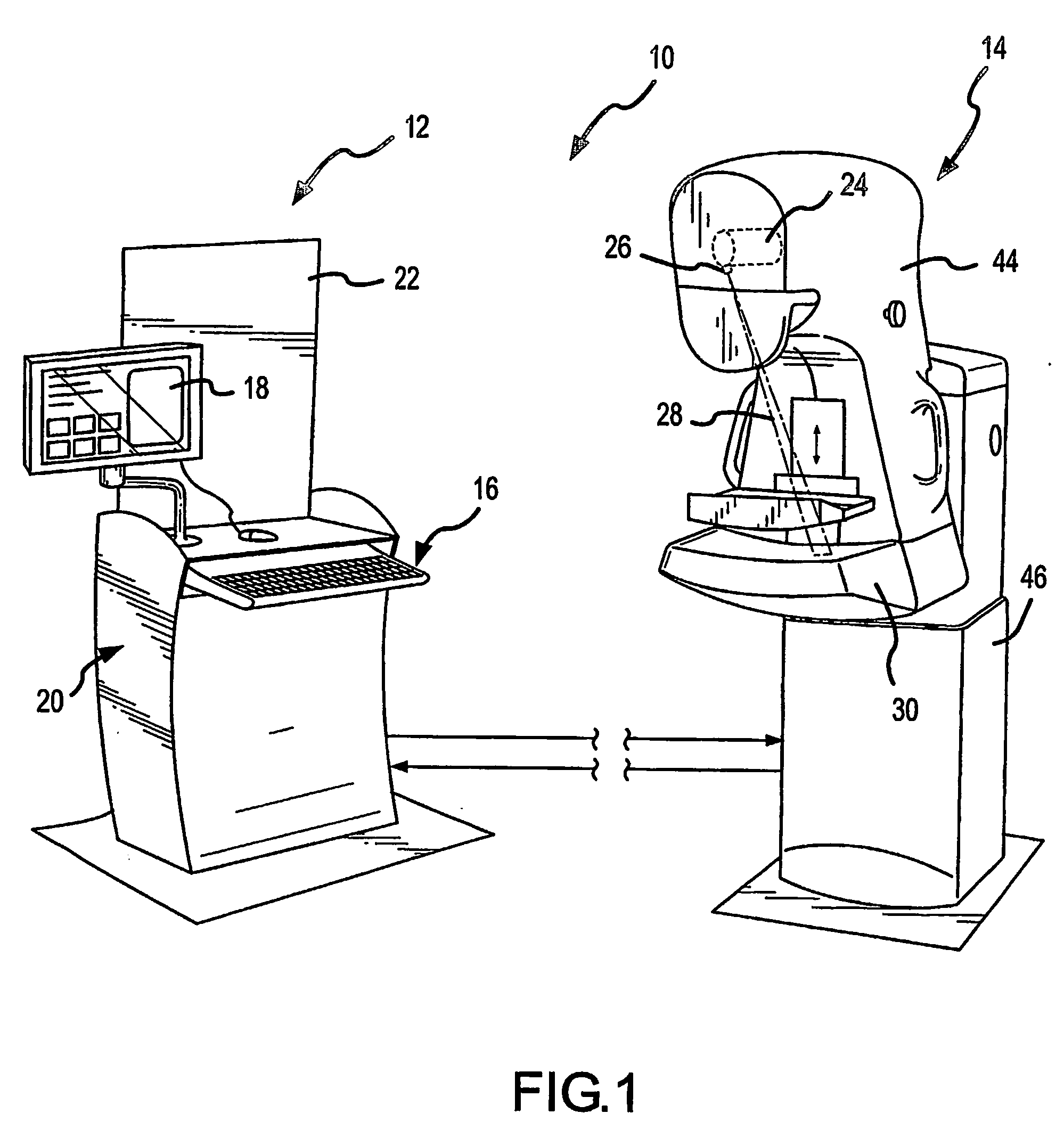Scatter rejection for composite medical imaging systems
a composite imaging and scatter rejection technology, applied in the field of medical imaging systems, can solve problems such as scatter related image degradation, and achieve the effects of reducing scatter composite imaging information, improving scatter compensation, and further enhancing scatter performan
- Summary
- Abstract
- Description
- Claims
- Application Information
AI Technical Summary
Benefits of technology
Problems solved by technology
Method used
Image
Examples
Embodiment Construction
[0039] In the following description, the invention is set forth in the context of a digital, x-ray slot-scan mammography system. This represents a particularly advantageous implementation of the invention as mammography is a challenging medical imaging application, in terms of both required contrast and resolution, and digital slot-scanning provides a number of advantages as discussed above related to reduced scatter, reduced dosage, enhanced resolution and digital display enhancement. However, various aspects of the invention are more broadly applicable in other contexts including other medical imaging applications.
[0040] The following discussion first provides a description of a digital slot-scan mammography system. Thereafter, various system components for reduced scatter generation and improved scatter rejection are described, i.e., system adaptations to reduce the amount of scattered photonic energy detected at a detector surface. Finally, various system adaptations and proces...
PUM
 Login to View More
Login to View More Abstract
Description
Claims
Application Information
 Login to View More
Login to View More - R&D
- Intellectual Property
- Life Sciences
- Materials
- Tech Scout
- Unparalleled Data Quality
- Higher Quality Content
- 60% Fewer Hallucinations
Browse by: Latest US Patents, China's latest patents, Technical Efficacy Thesaurus, Application Domain, Technology Topic, Popular Technical Reports.
© 2025 PatSnap. All rights reserved.Legal|Privacy policy|Modern Slavery Act Transparency Statement|Sitemap|About US| Contact US: help@patsnap.com



